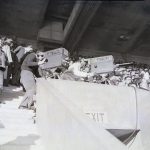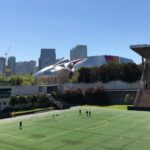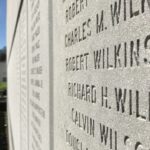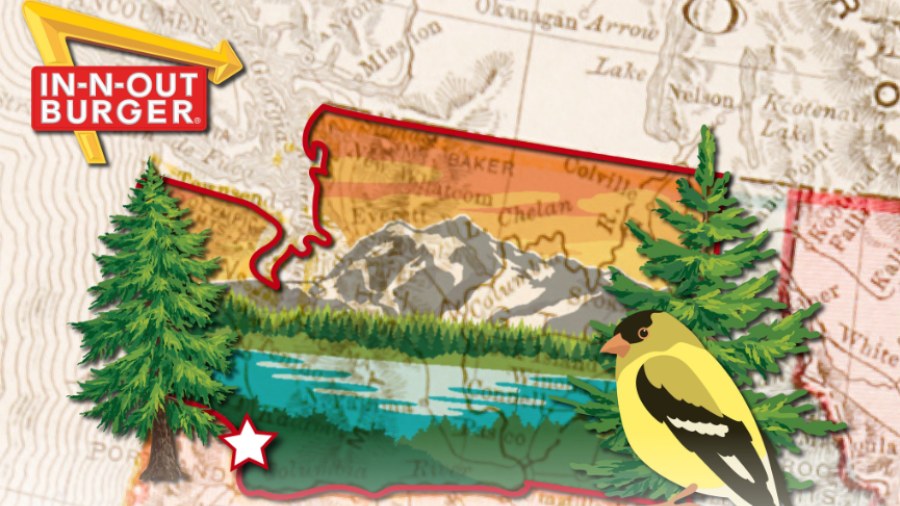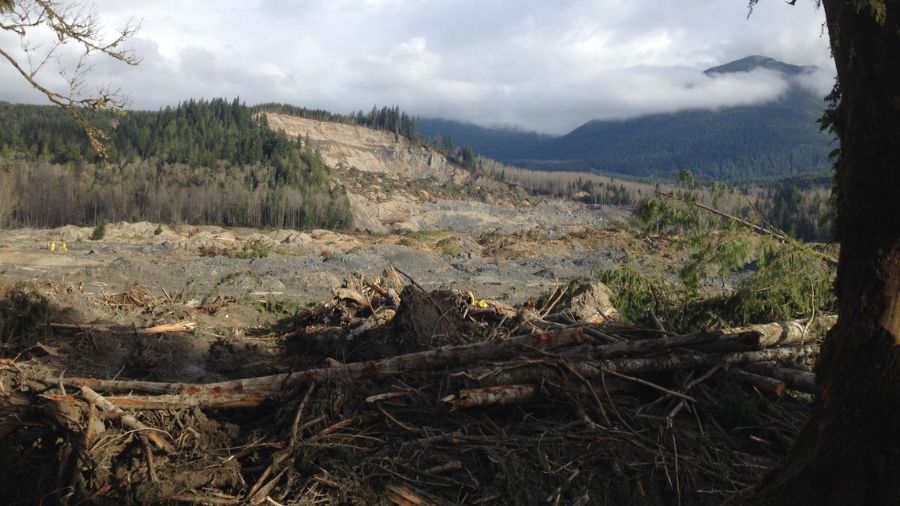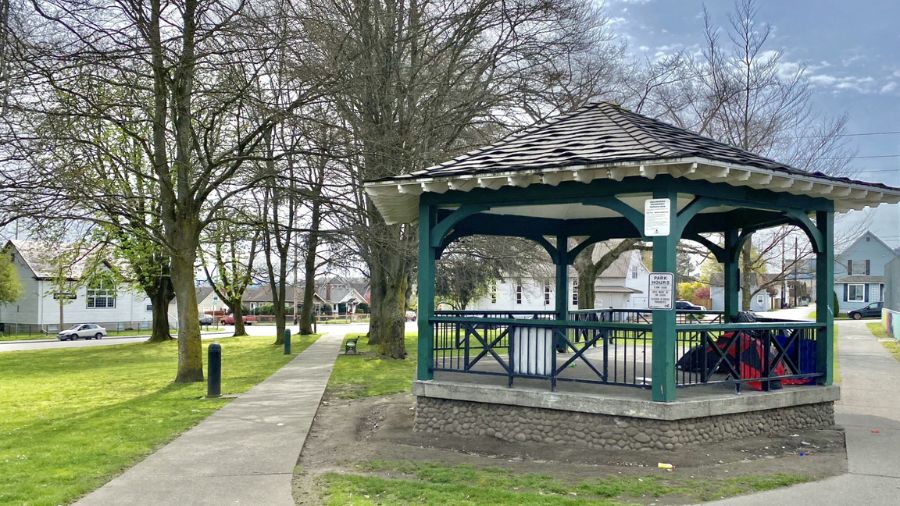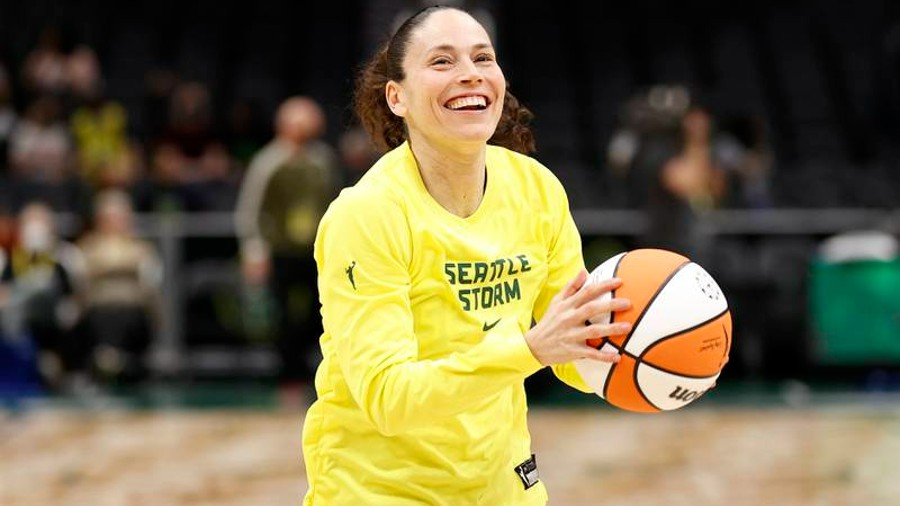Uncertain future for Memorial Stadium
May 24, 2017, 7:16 AM | Updated: Aug 22, 2023, 8:36 am
The broad pedestrian plaza in front of Memorial Stadium at Seattle Center was converted to a parking lot many years ago. On busy days, the lot fills up, and the row nearest the stadium is often choked with SUVs and minivans, nosed up close to a high limestone wall fronted by a dense hedge.
RELATED: Demolition reveals gargoyles and questions at Seattle Center
On either side of the limestone wall, simple but stout fountains sit defunct and quiet, and colored lights that once illuminated the wall’s face are long-since burned out. Trash and rodent burrows line the space between the hedge and the base of the wall.
A few feet above the ground-level squalor, neatly arranged in 24 columns and carved in stone, are names of nearly 800 Seattle School District alumni. The names are in alphabetical order, from Helmer Aakervick to David Zechman, and all of the men listed – former students in Seattle schools – died in World War II.
Above the names, the inscription reads, in six-inch high carved letters:
YOUTH HOLD HIGH YOUR TORCH OF TRUTH, JUSTICE AND TOLERANCE LEST THEIR SACRIFICE BE FORGOTTEN
So why is it that one of Seattle’s most prominent war memorials – on the edge of bustling Seattle Center and in the shadow of the iconic Space Needle – has stood ignored and neglected for decades?
Flip Herndon is associate superintendent of facilities and operations for the Seattle School District. He says the district can’t afford to take care of the World War II memorial, let alone Memorial Stadium.
“Unfortunately, just like the rest of the stadium, we don’t have enough dollars to keep up the maintenance on everything, and that’s true of a lot of our schools,” Herndon said. “We have a significant maintenance backlog that we’re constantly trying to catch up with.”
Herndon also says the school district is growing and considering building a new high school at the Memorial Stadium site, which makes him reluctant to spend any money refurbishing the memorial where it currently stands.
“I don’t know what the total cost is to get fountains and electrical,” Herndon said. “I’d hate to put that in there only to have a major project that would wipe out possibly millions of dollars of infrastructure, if it’s just going to go away and we’re going to have a new structure there.”
It turns out that Memorial Stadium is at a crossroads, once again, as it has been many times in years past. And the memorial wall somehow keeps getting lost in the shuffle.
What is Memorial Stadium?
The stadium was built in 1947 to host high school football, on land that the City of Seattle gave to the Seattle School District for that purpose. The land had been the site of Civic Field, the outdoor ballpark that was built in the late 1920s, along with the Civic Arena and Civic Auditorium right next door.
Architect for the innovative, mildly modern (yet still somewhat nondescript) concrete-roofed, twin-grandstand stadium was George Stoddard, who also designed Green Lake Aqua Theatre and the gatehouse for Broadmoor, as well as the south grandstands at Husky Stadium.
In 1945, as the high school stadium was being designed, World War II ended, and the school district decided to dedicate the new facility as a memorial to the district’s war dead. The official name for the project became “Seattle High School Memorial Stadium,” and it was ready for the fall football season in 1947. The memorial wall came a few years later. It was designed by Garfield High School graduate Marianne Hanson, and was dedicated on Memorial Day 1951.
Bill Kossen is a retired reporter and editor who worked for The Seattle Times for many years. He’s also a local sports historian and one-time backup quarterback for the old Lincoln High School Lynx of Wallingford.
“Memorial Stadium in Seattle simply was the center of the universe of high school football in the Pacific Northwest,” Kossen said Tuesday on a visit to Lower Queen Anne.
“This was the place to go as a player, [the] place to go as a fan. There was a lot of other nice stadiums around the area and there was the famous Stadium Bowl in Tacoma, but there was nothing like Memorial Stadium,” Kossen said.
Kossen says that Memorial Stadium was best known for the “Turkey Day Game” held there each year from 1947 until the early 1970s.
“People would plan their Thanksgivings around the championship football game that would be played on Thanksgiving Day in Memorial Stadium,” he said.
It was the second annual Turkey Day Game in 1948 when what’s now KING-TV made its inaugural TV broadcast, beaming video of West Seattle versus Wenatchee to a handful of local viewers, and to one of the first cable TV systems anywhere in the world – more than 100 miles away in Astoria, Oregon. The game ended in a 6-6 tie.
But the biggest excitement at Memorial Stadium came in the post-Turkey Day Game era, says Kossen.
“Some of the greatest games in history were played down here,” Kossen said.
“1975, the four-overtime thriller between Garfield and Blanchet for the Metro League Championship, with [future Seattle City Councilmember] Bruce Harrell starting on the Garfield side, he was a linebacker and the team captain,” Kossen said. “And famous [future Husky and Seahawk] Joe Steele on Blanchet.”
The final score, after an incredible four overtimes? Blanchet 42, Garfield 35.
“It was considered by many as the greatest high school football game of the century in Washington state,” said Kossen. “Right down here in little old Memorial Stadium.”
Beyond high school football, Memorial Stadium hosted earlier iterations of the Sounders in the 1970s and the 1990s, and is current home to the Seattle Reign. During the 1962 World’s Fair, it was site of the opening and closing ceremonies, and a couple of other notable events — the Tommy Bartlett waterskiing show, and the huge musical extravaganza known as the “Canadian Tattoo.” The Grateful Dead played there in the early 1990s – as have many bands over the years – and Bumbershoot has presented musical acts there of late. It’s also been the finish line for the Seattle Marathon, and site of protest rallies during the WTO.
Operating issues
So, why, exactly, is Memorial Stadium at a crossroads now?
Fast-forward to 2017, and it appears that there may be tension (or something) between the City of Seattle, who owns and operates Seattle Center, and the Seattle School District, who owns and operates Memorial Stadium.
It’s an odd arrangement, and most Seattle Center visitors probably never realize that Memorial Stadium is run by a separate entity. Compared with the rest of Seattle Center, Memorial Stadium looks somewhat tired and rundown, and the parking lot now operating on the old pedestrian plaza is incongruous with the more thoughtful layout and “street appeal” of the adjoining buildings and open spaces that make up the modern version of Seattle Center.
Add to this that the city has had its eyes on Memorial Stadium for decades. In the early 1980s, there was a proposal from Seattle Center to build what became the Washington State Convention & Trade Center there. About a decade ago, there was a plan floated to demolish the stadium, and replace it with a lawn and amphitheater, with a parking garage underneath – all part of a possible ballot issue that never saw the light of day. The Great Recession nine years ago helped quash those plans.
The future
Flip Herndon, of the Seattle School District, says the discussions and plans are nothing new.
“I’ve heard about all sorts of discussions,” Herndon said. “And you know, discussions about the city wanting different kinds of uses for that land are, as far as I know, as old as when it was originally deeded to the school district, so they probably aren’t just 9 years old, you’re probably talking about 50 or 60 years old.”
Herndon says the district needs a new high school in downtown Seattle, and the land it owns at Memorial Stadium would be a good fit for a new high school and for a new or refurbished stadium.
“That’s some of the stuff we’re starting to study now over these next couple of months . . . but as we prepare for a ballot measure we need to know what the costs are for the different approaches to dealing with that particular location,” Herndon said.
By “different approaches” it seems that Herndon means demolition or renovation, but it doesn’t sound like he’s a fan of the 1947 structure.
“You’re talking about concrete slabs, really,” Herndon said. “There’s nothing architecturally significant about what that particular thing looks like.”
Memorial Stadium is not considered a city landmark, though it would probably be eligible were it to be nominated. Back in 2007, a World War II vet named Guy Gallipeau tried to nominate it, but the application that he and Bob Hegamin submitted to the City of Seattle’s Landmark Preservation Board was considered incomplete and it was never voted on.
Gallipeau and Hegamin were old enough to remember friends and classmates who died in World War II; that can be said about fewer and fewer people every day. Gallipeau passed away last year at age 87; Hegamin died earlier this year at age 90.
RELATED: Wrestling with the ghosts of Confederate monuments
Whether the school district decides to replace or renovate Memorial Stadium, the significant funding required would most likely have to come from a capital levy, which could be on the ballot as early as 2019.
As for the future of the memorial wall, Herndon says not to worry.
“We’ll definitely continue to keep that,” Herndon said. “We want to make sure that we preserve that wall and honor that memory, and whatever designs we have in the future [that] go in there, that wall would be integrated in whatever project we have moving forward.”
KIRO Radio contacted Seattle City Councilmember Debora Juarez for her perspective on the city’s relationship with the school district as it specifically pertains to Memorial Stadium. Councilmember Juarez is chair of a Council Committee that oversees, among other things, Seattle Center.
Through email from an aide, Councilmember Juarez declined to comment. The aide wrote: “With regard to Memorial Stadium, we recommend speaking with Seattle Public Schools directly.” A subsequent request for comment from Councilmember Juarez – repeating KIRO Radio’s interest in the city’s relationship with the school district – received no reply. Seattle Center and Mayor Ed Murray’s office also did not respond to requests for comment on the future of Memorial Stadium.
Meanwhile, Herndon says that the school district’s relationship with Seattle Center is “fine.”
“We’re having conversations right now,” Herndon said. “I know they’ve got other plans about what they want to do on the Seattle Center, so we’re in communication with them and they know we’re looking at redeveloping [Memorial Stadium], and so we continue to have conversations about timelines on what we’re looking for.”
With 2019 a possible target date for seeking funding for their plans, Herndon points out what might be a major difference between the school district and Seattle Center when it comes to the future of Memorial Stadium.
“My guess is we will have money to do something before they have any money to do anything,” Herndon said.
EDITOR’S NOTE
Do you have a relative listed on the memorial wall at Memorial Stadium who you’d be willing to talk to KIRO Radio about? Please send email to fbanel@kiroradio.com



